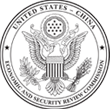Hearings
The hearing will review key developments in the U.S.-China relationship in 2019. Panel 1 will evaluate developments in China’s political economy and the impact of U.S.-China trade frictions on the Chinese economy. Panel 2 will assess the implications of Chinese military activities and modernization in 2019 for the United States and U.S. allies and partners. Panel 3 will review the implications of economic, political, and security developments between China and Taiwan for regional security, and explore the escalating situation in Hong Kong.
Hearings
The hearing will assess China’s role in global health, pharmaceuticals, and medical products. In addition, it will examine the activities of Chinese health and biotech firms in the United States, and U.S. access to China’s health market. Finally, the hearing will consider the implications for U.S. public health and national security of growing U.S. dependence on Chinese health products.
Research
Over the past two decades, the Chinese People’s Liberation Army (PLA) has expanded its involvement in humanitarian assistance and disaster relief (HA/DR) missions outside China’s borders. Through its contributions to HA/DR, Beijing has provided important assistance to disaster-stricken populations and sought to burnish its image as a “responsible stakeholder” in the international system. At the same time, Beijing routinely allows political considerations to guide its participation in HA/DR missions, violating the humanitarian spirit of these operations and suggesting Chinese leaders may view HA/DR less as a global good than an instrument of influence. Moreover, the PLA has cooperated haltingly with international partners during these missions and at times willfully disregarded best practices for military participation in HA/DR. This report examines the drivers behind the PLA’s increasing participation in HA/DR abroad; the impact, both positive and problematic, of the PLA’s involvement in several recent multinational disaster relief operations; and the implications of the PLA’s involvement in and approach to these missions for the United States.
Hearings
In his report to the 19th Congress of the Chinese Communist Party, General Secretary Xi Jinping declared that China would complete the modernization of its armed forces by 2035 and transform them into “world-class forces” by the middle of the 21st century. Xi’s vision for the composition and mix of capabilities that would allow the People’s Liberation Army to be judged to be a “world-class” military is unknown. Will it be a force with global expeditionary capability, mimicking the United States, or an overwhelming regional force reminiscent of Imperial Japan in 1941? Or, as the two are not necessarily mutually exclusive, could it be both? This hearing will explore what the implications of a world-class Chinese military might be for the United States and its allies and partners, with the goal to begin a public dialogue on this topic and develop recommendations for Congress on how the United States might best protect its interests in the face of a highly-capable Chinese competitor.
Hearings
This hearing will examine China’s development of artificial intelligence, new materials, and energy storage, renewable energy, and nuclear power. It will assess China’s capabilities in producing and commercializing these technologies vis-à-vis the United States and its ambitions to export these technologies and shape their global governance in ways that disadvantage the United States. The hearing will also consider China’s potential military application of these technologies and strategic implications for the United States.
